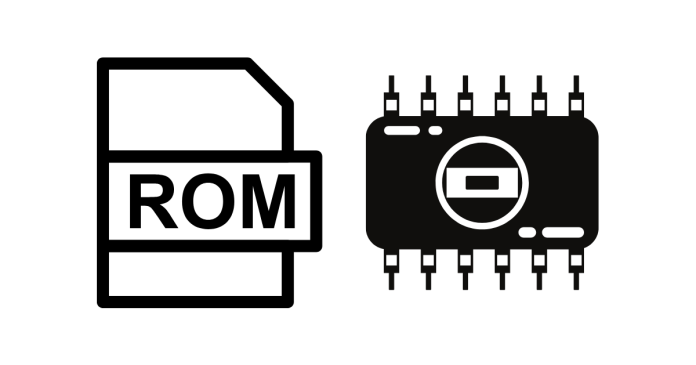What is ROM (Read-Only Memory)?
ROM (Read-Only Memory) is a type of non-volatile memory used in computers and electronic devices. Non-volatile means that data stored in ROM remains intact even when the device is powered off. ROM is primarily used to store firmware (software that is closely tied to specific hardware and rarely changed), system-level data, and boot instructions.
Key Characteristics of ROM
- Non-Volatile:
- Data is retained even when power is turned off.
- Pre-Programmed:
- ROM is programmed during manufacturing and typically cannot be modified afterward.
- Read-Only:
- As the name implies, the data in ROM is only readable; it cannot be written to or modified under normal circumstances.
- Reliable:
- Since the data cannot be altered, ROM is highly reliable for storing critical instructions like a device’s boot process.
Functions of ROM
- Stores Firmware:
- ROM contains the firmware required to run a device, such as a computer’s BIOS (Basic Input/Output System).
- Boot Process:
- ROM stores the bootstrap program, which initializes the hardware and loads the operating system when a device is powered on.
- Embedded Systems:
- ROM is used in embedded systems like washing machines, microwaves, and calculators to store permanent instructions.
- Device Drivers:
- Certain low-level device drivers are stored in ROM to facilitate interaction between hardware and software.
Types of ROM
- Mask ROM:
- Permanently programmed during manufacturing.
- Used in applications where data never changes.
- PROM (Programmable ROM):
- Can be programmed once using a special device, but cannot be erased or modified afterward.
- Commonly used for microcontrollers and other custom applications.
- EPROM (Erasable Programmable ROM):
- Can be erased by exposing it to ultraviolet (UV) light and then reprogrammed.
- Used in situations where data needs to be updated occasionally.
- EEPROM (Electrically Erasable Programmable ROM):
- Can be erased and reprogrammed electrically without the need for UV light.
- Commonly used in modern applications like BIOS chips.
- Flash Memory:
- A modern type of EEPROM, but faster and more efficient.
- Widely used in USB drives, SSDs, and memory cards.
Advantages of ROM
- Permanent Storage:
- Data is preserved even without power.
- Reliable and Secure:
- Data is safe from accidental modifications.
- Fast Access:
- Allows quick retrieval of instructions or data.
- Low Power Consumption:
- Requires less energy compared to other memory types.
Disadvantages of ROM
- Non-Modifiable:
- Standard ROM cannot be easily updated or changed.
- Limited Storage Capacity:
- ROM typically has less storage capacity compared to other memory types like RAM.
- Special Equipment Needed:
- Certain types (like EPROM or PROM) require specialized tools for programming or erasure.
Applications of ROM
- Computer Systems:
- Storing BIOS/UEFI firmware.
- Embedded Systems:
- Controlling specific devices like ATMs, calculators, and household appliances.
- Gaming Consoles:
- ROM chips store game data in cartridges.
- Mobile Devices:
- Used to store the operating system and recovery software.
- IoT Devices:
- Stores permanent code and configuration settings.
Comparison: ROM vs. RAM
| Feature | ROM | RAM |
|---|---|---|
| Volatility | Non-volatile | Volatile (data is lost when power is off) |
| Data Modification | Cannot be easily modified | Can be easily read, written, and modified |
| Speed | Slower compared to RAM | Faster access and performance |
| Usage | Stores firmware and boot instructions | Stores data and instructions temporarily during execution |
| Capacity | Smaller storage capacity | Larger storage capacity |
Conclusion
ROM is a crucial component in computer systems and embedded devices, storing essential instructions that ensure a device operates correctly. Its non-volatile nature and reliability make it an indispensable part of any hardware design. However, for dynamic or frequently changing data, other types of memory like RAM or flash memory are better suited.
Would you like further details on a specific type of ROM or its applications?



